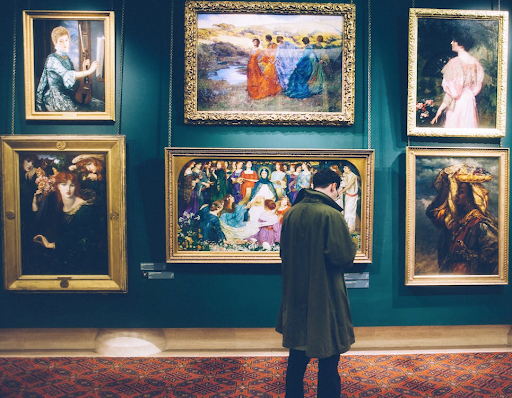Art prices are subject to manipulation. Once purchased, they can disappear for years. Items bought at auction end up in free ports, where they are stored for years. The artwork is then anonymously and privately purchased by someone else.
The advantage of artwork is its portability. They are lighter than gold or other jewellery. Painting can be bought and sold with minimal paperwork. But most importantly, it can be done entirely anonymously.

Works of art are not subject to strict regulation by national, regional, and global regulators. Institutions serving the financial sector are regulated very strictly. These regulations are aimed at preventing such money laundering crimes.
However, there are no such regulations in art, and criminals have successfully capitalised on this shortcoming. As a result, AML/CFT obligations have recently been imposed on art dealers in the United States. Therefore, it is natural that there is a growing demand for the use of AML certification online platforms.
General Information
Under the UK Value Added Tax Act, a work of art is defined as ceramics, tapestries, enamels on copper, handmade paintings, sculptures, decorative frames, photographs, or sculptural casts.
For technical drawings, art is handmade works decorated with maps, unique pictures, artefacts inherent in the landscape, and objects. Anti-money laundering provisions also apply to these works.
How is Art Used to Hide Money Laundering?
Money laundering in the art sector occurs when illicitly obtained funds are funnelled through the buying and selling of artworks to create an appearance of legitimate income. This process exploits unique characteristics found within the art world, including its lack of regulation, opaque transactions, and high valuation of artworks.
- Purchase of artworks with illicit funds. It can be done through paper companies or anonymous trusts to conceal the actual ownership of the work. Paintings purchased from museums are transported to a free port or a high-security warehouse near an airport. The artworks are stored there for years.
At the same time, the artwork is not damaged. As a result, the painting disappears from your sight. Ports make the act of disappearing much easier. Also, while stored in these port warehouses, the artworks are not taxed because they are considered in transit. At this location, paintings have the capability to be sold privately and anonymously, all while remaining within the port.
- Price gouging: Art launderers can manipulate the prices of artworks by engaging in a chain of artificial transactions, creating a false impression of increased value. Subsequently, if a buyer is willing to pay the inflated price, the artwork can be sold for a significantly higher amount.
- Concealing ownership: Launderers can also hide the valid owner of a work of art by transferring it to another paper company or an anonymous trust. The lack of traceability regarding the artwork’s owner or the source of financing poses significant challenges for the authorities in their investigative efforts.
- Selling the artwork: Acting it at a higher price effectively disguises illicit funds as legitimate income. Governments will find tracing and controlling the sale challenging. Transactions can be routed through many countries to the destination country, and small amounts can be demanded. Transactions between multiple countries make it even more difficult.
- Misuse of institutional structures: Criminals often work through intermediaries such as paper companies and non-profit organisations (NPOs). This conceals the transfer of valuable artworks, the source of funds, and the identities of sellers and buyers.
- Bribery: Corrupt bureaucrats sometimes receive valuable artworks as bribes or kickbacks rather than directly through the financial system. In this way, parties can avoid transferring funds between bank accounts.
Lack of regulation, the high value of artworks, and the secrecy of transactions attract criminals who engage in illicit activities. The solution lies in raising awareness, law, and technology to combat these crimes.
Due diligence, accurate record keeping, and AI-based anti-money laundering tools can help art businesses reduce the risk of interacting with criminals and money launderers. And, of course, it is essential to protect reputations.
Conclusion
The art market is very vulnerable to money laundering. However, there are still effective strategies and tools to combat this problem. Through awareness raising, appropriate regulation, and AI-based technology, the art business can be protected from the consequences of crime.
Governments, law enforcement, and the art industry must work together to ensure that the market remains legitimate and responsible for artists, collectors, and enthusiasts.
Interesting Related Article: “Investing in Art 2023: A Comprehensive Guide“
